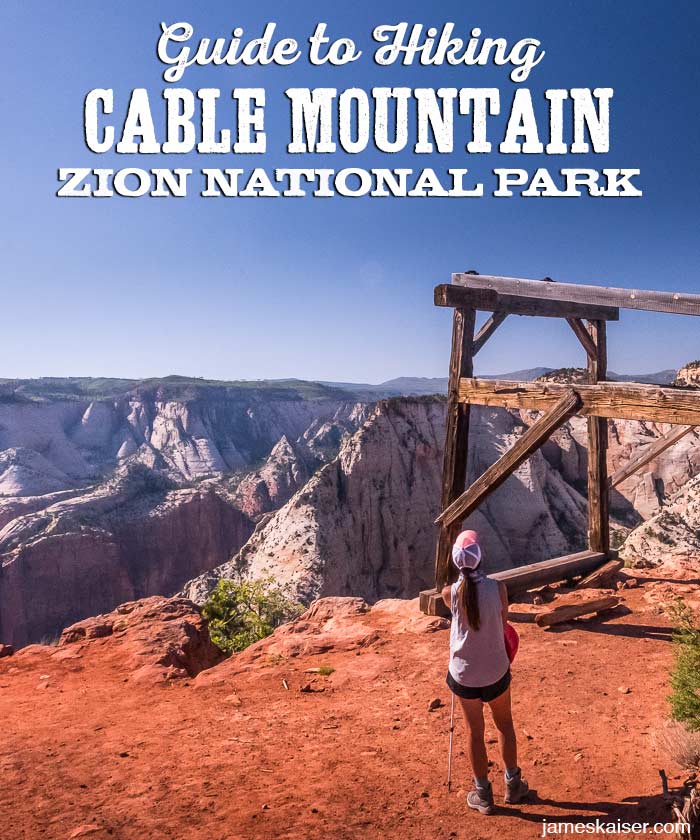
Cable Mountain rises high above the floor of Zion Canyon, offering incredible scenery in the heart of Zion National Park. From Cable Mountain’s sheer ledge, which plunges nearly 2,000 feet straight down, you’ll enjoy amazing views of Angels Landing, Observation Point, and the West Rim of Zion Canyon.
In addition to terrific views, Cable Mountain also has some fascinating history. In 1901, a cable-and-pulley system was installed on the rim of Cable Mountain to transport lumber from the rim to the floor of Zion Canyon. (See full history below). Today the decaying remains of the cableworks are still perched on the rim.
There are two ways to hike to Cable Mountain:
- Hike 7.7 miles (one-way) and 2,000 vertical feet starting from Weeping Rock at the floor of Zion Canyon.
- Hike 3.6 miles (one-way) and 500 vertical feet starting from Stave Spring trailhead near the east rim of Zion Canyon.
This Cable Mountain hiking guide covers the second, easier option.
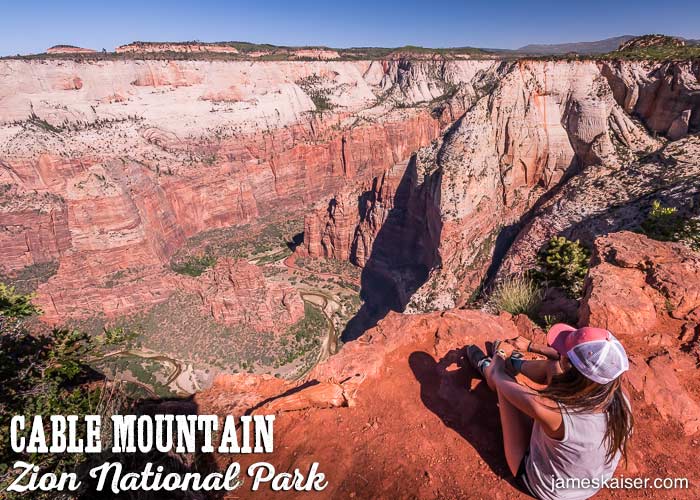
Cable Mountain Trail Facts
Rating: Moderate
Hiking Time: 4–5 hours
Distance: 7.2 miles round-trip
Elevation Change: 500 feet
Cable Mountain Trailhead
The easiest route to Cable Mountain starts at Stave Spring Trailhead (one-hour drive from Springdale). Drive 2.4 miles east of Zion’s East Entrance, then turn left onto North Fork County Road. Drive 5.4 miles to Ponderosa Ranch and follow the signs to Cable Mountain. High clearance is required just before the trailhead.
Cable Mountain Trail Description
From Stave Spring Trailhead, follow the trail through a ponderosa forest, then drop into a lovely sagebrush valley. Bear left at the first junction, then bear left at the second junction. Follow the trail uphill through the ponderosa forest, which soon transitions to a forest of Gambel oak. A little over one mile past the last junction you’ll reach the junction with Deetrap Mountain. Bear right.
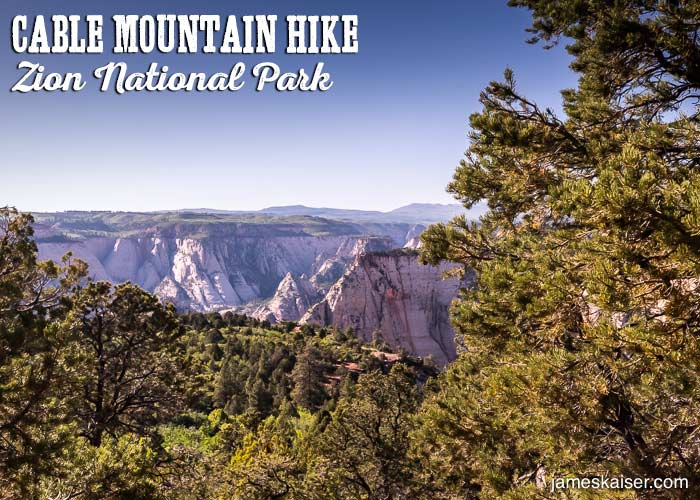
After ascending a short distance, you’ll descend towards the rim of Zion Canyon. Along the way, you’ll enjoy glimpses of distant peaks through the piñon-juniper forest.
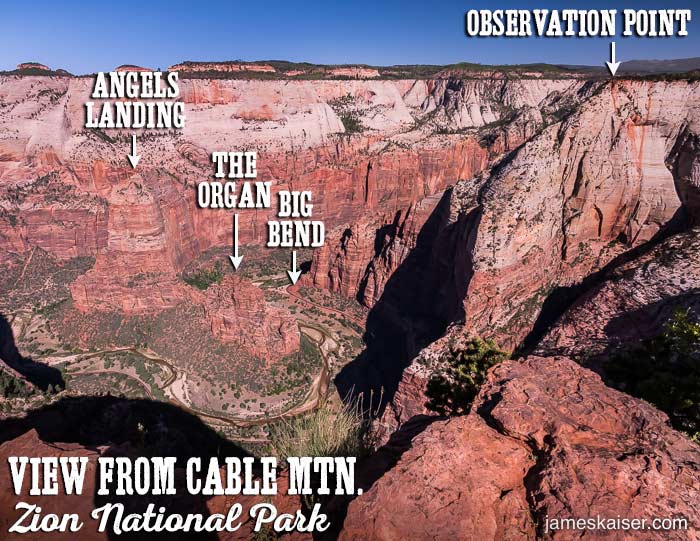
Eventually, you’ll drop to the rim of Cable Mountain. Watch your step! There is no guardrail or barrier. Spread out below is an incredible panorama that includes Angels Landing (with a dramatic view of the long spine that leads to its summit), the Organ, Big Bend, and Observation Point.
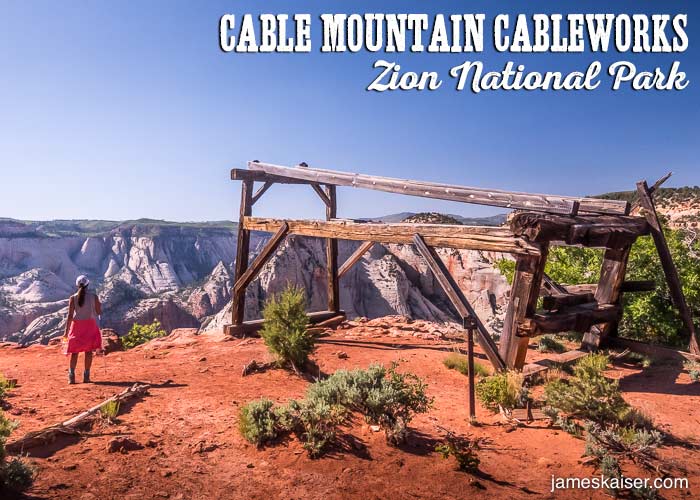
The Cableworks on Cable Mountain
There are many ledges with steep dropoffs in Zion Canyon, but Cable Mountain is one of the steepest. That’s why local entrepreneur David Flanigan built a cableworks in 1901 to transport lumber from the rim (where ponderosa pines are abundant) to the valley floor (where trees for lumber are scarce).
When it came time to test the system, Flanigan put his dog Darkey in a basket attached to the cable. Darkey rose 2,000 feet from the floor of Zion Canyon to the top of the cliff. The trip was a success, but according to later reports: “It was a week before the dog recovered fully, and since that time the vicinity of the Wire is a place he never visits.”
By the time the cableworks closed in 1926, it had transported several million feet of lumber from the rim. Its final job was hauling 240,000 feet of lumber to build Zion Lodge.

